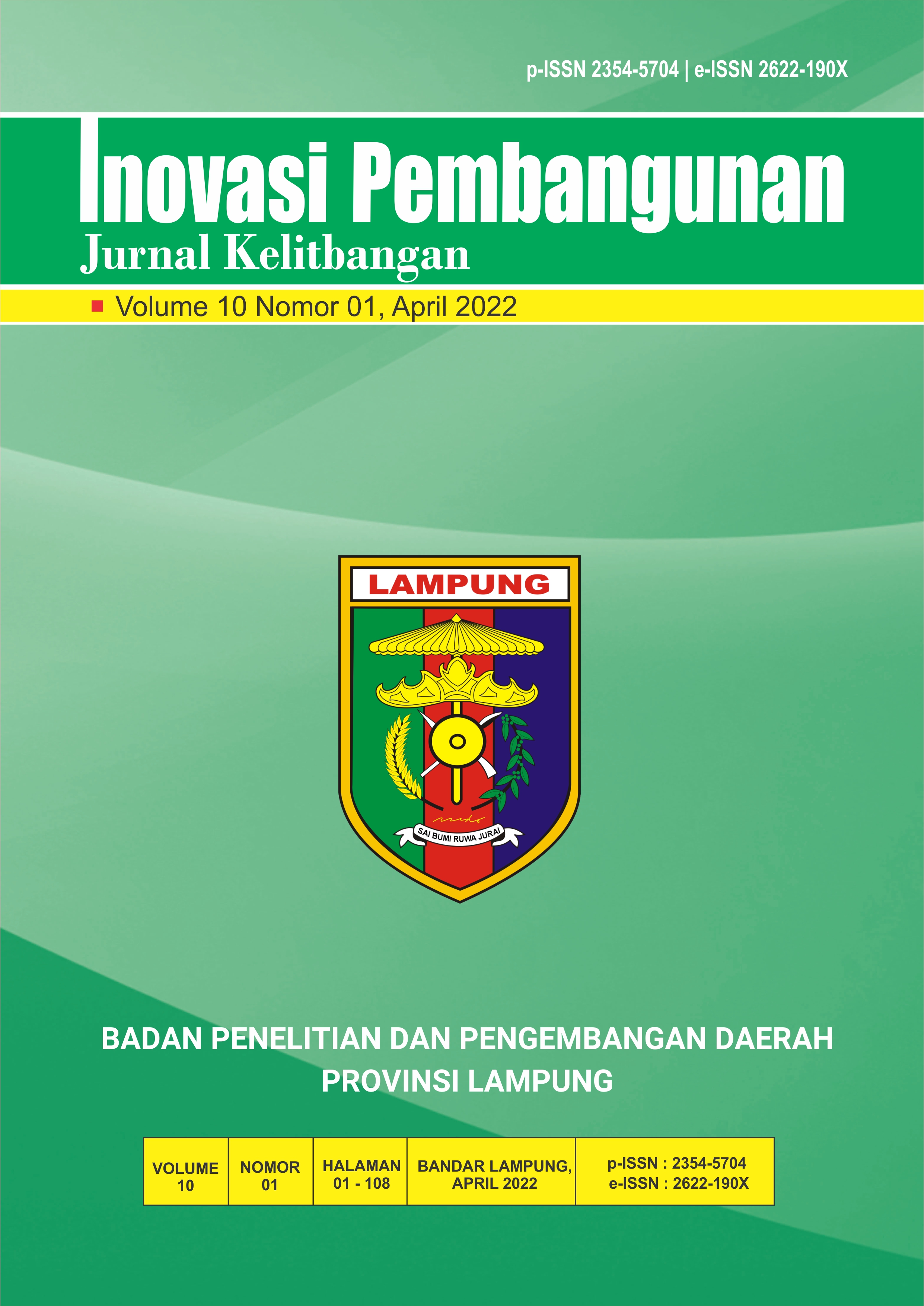PENGARUH APLIKASI PUPUK HAYATI DAN PUPUK PELENGKAP ALKALIS DALAM MENINGKATKAN PRODUKSI CABAI MERAH KERITING (Capsicum annuum L.)
DOI:
https://doi.org/10.35450/jip.v10i01.270Kata Kunci:
alkali supplement fertilizer, biofertilizer, chiliAbstrak
Penelitian bertujuan untuk mengetahui pengaruh aplikasi pupuk hayati dan pupuk pelengkap terhadap pertumbuhan dan produksi tanaman cabai merah keriting (Capsicum annuum L.). Penelitian menggunakan Rancangan Acak Kelompok (RAK), terdiri atas dua faktor dan tiga pengulangan. Faktor pertama adalah aplikasi pupuk hayati yang terdiri atas 3 taraf, yaitu H0 = tanpa aplikasi pupuk hayati; H1 = dosis 4 ml/tanaman; H2 = dosis 8 ml/tanaman. Faktor kedua adalah pupuk pelengkap alkalis yang terdiri atas tiga taraf, yaitu P0 = tanpa pupuk pelengkap alkalis; P1 = dosis 0,05 gr/tanaman; P2 = dosis 0,1 gr/tanaman. Hasil penelitian menunjukkan pada variabel pertumbuhan tidak terdapat interaksi yang nyata antara aplikasi pupuk hayati dan pupuk pelengkap alkalis, sementara pada variabel produksi terdapat interaksi antara aplikasi pupuk hayati dan pupuk pelengkap alkalis terhadap variabel jumlah bunga per tanaman, jumlah buah konsumsi, dan bobot buah per tanaman. Perlakuan pupuk hayati 8 ml/tanaman yang disertai pemberian pupuk pelengkap alkalis 0,1 gr/tanaman menghasilkan bobot buah tertinggi, yaitu 436,70 gram/ tanaman. Aplikasi pupuk hayati dengan dosis 8 ml/tanaman mampu menghasilkan produksi cabai 402,12 gram/tanaman, sementara aplikasi pupuk pelengkap alkalis 0,1 gr/tanaman mampu menghasilkan menghasilkan produksi cabai sebesar 400,51 gram/tanaman.
Unduhan
Diterbitkan
Cara Mengutip
Terbitan
Bagian
Penulis yang mengirimkan jurnal harus mengerti bahwa jurnal yang diterima dan dipublikasikan, hak cipta jurnal tersebut diberikan kepada Inovasi Pembangunan: Jurnal Kelitbangan (JIP), Balitbangda Provinsi Lampung sebagai penerbit jurnal.
Hak cipta mencakup hak eksklusif untuk mereproduksi dan mengirimkan jurnal ini dalam semua bentuk dan media, termasuk mencetak ulang, memotret, mikrofilm dan reproduksi sejenis lainnya, serta terjemahan, reproduksi sebagian / bagian dari jurnal ini, penyimpanannya di basis data dan penularannya oleh bentuk atau media apapun seperti salinan elektronik, elektrostatik dan mekanis, fotokopi, rekaman, media magnetik, dll.















